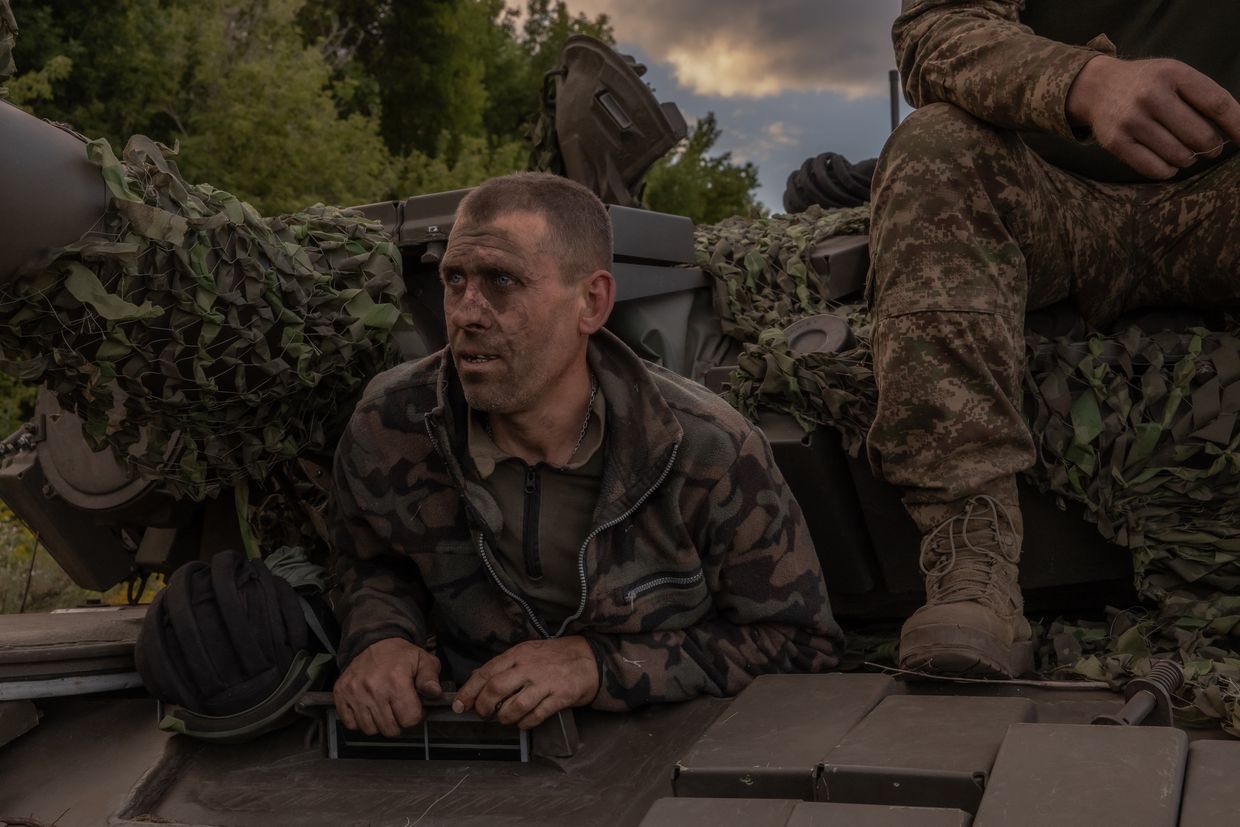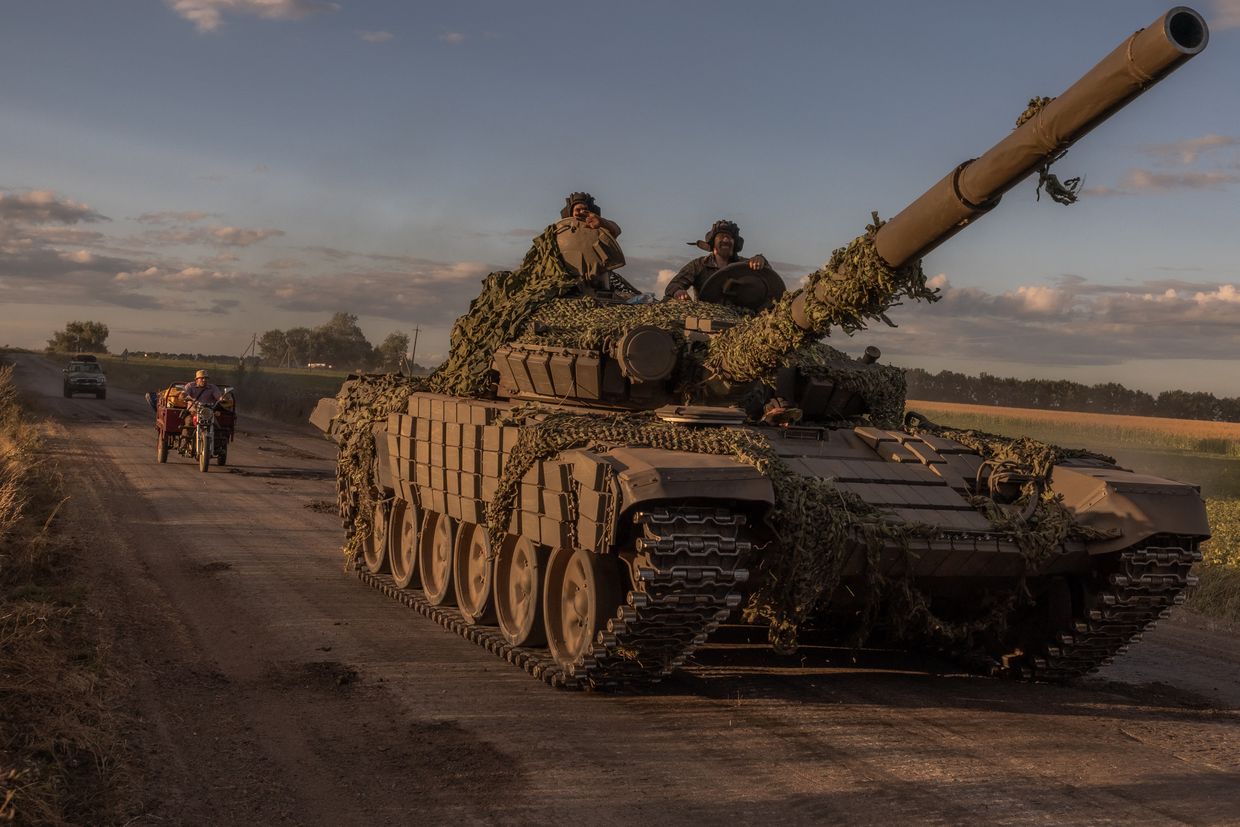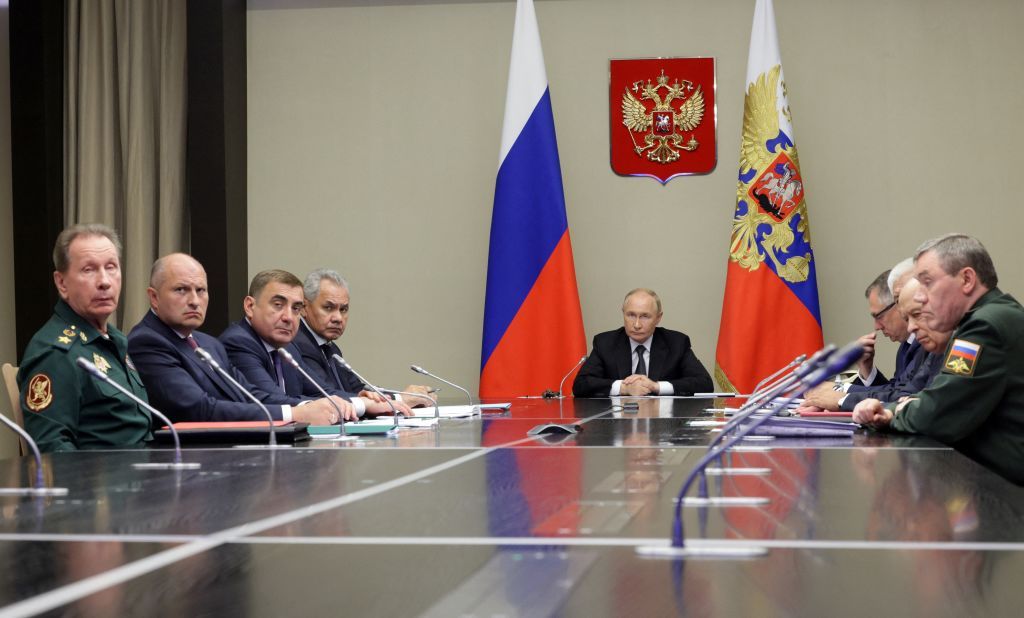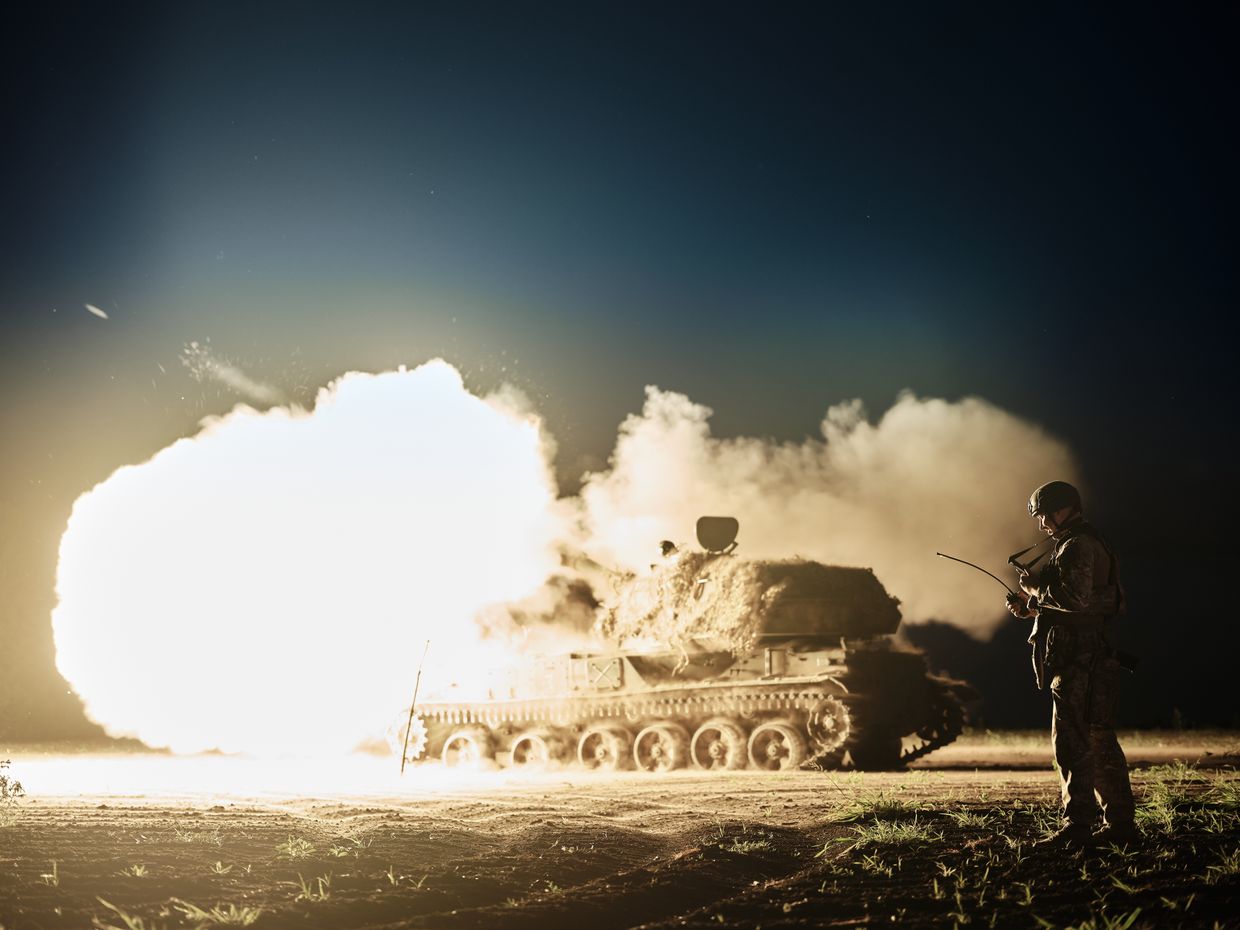Ukraine war latest: Ukraine captures Sudzha in Russia's Kursk Oblast, Zelensky confirms
Key developments on Aug. 15:
- Zelensky confirms full capture of Russian town of Sudzha in Kursk Oblast
- US-Ukraine discussions about long-range cruise missiles 'in advanced stages,' source says
- Ukraine captures over 100 Russian, Chechen soldiers in a day in Kursk Oblast, source says
- Russian troops intensify activity near Krynky, Ukrainian forces withdraw to new positions, military says
- Russia declares federal emergency in Belgorod Oblast
President Volodymyr Zelensky confirmed in his address on Aug. 15 that Ukrainian forces had captured the entire Russian town of Sudzha in Kursk Oblast.
Commander-in-Chief Oleksandr Syrskyi reported that Ukrainian troops had taken control of more than 80 settlements in Kursk Oblast during the ongoing operation, Zelensky added.
Ukraine is establishing a military administration in the town of Sudzha, according to Zelensky.
Earlier on Aug. 15, Syrskyi said that Ukraine established the first military administration in the Ukrainian-held parts of Russia's Kursk Oblast, which will be led by General Eduard Moskaliov, a former commander of the Joint Forces.
Ukrainian forces in Kursk Oblast advanced 35 kilometers deep and controlled 1,150 square kilometers of Russian territory, Syrskyi said in his report. In total, 82 Russian settlements are under Ukraine's control as of Aug. 15, according to Syrskyi.
Sudzha is located less than 10 kilometers (6 miles) from the border with Ukraine, while the city of Kursk lies 85 kilometers (53 miles) to the northeast of Sudzha.
The Russian Defense Ministry said on Aug. 9 that Ukrainian troops reached the western outskirts of the town. Ukrainian soldiers posted video footage later, claiming to be in Sudzha.
Ukraine's Foreign Ministry spokesperson, Heorhii Tykhyi, said on Aug. 13 that the incursion, which had been launched by Ukraine on Aug. 6, aims to prevent Moscow from sending reinforcements to the front in Donetsk Oblast. It is also designed to disrupt Russian logistics and halt cross-border attacks in lieu of Ukraine's long-range strikes with Western arms, which remain under unofficial restrictions from partners.
Deputy Prime Minister Iryna Vereshchuk said on Aug. 14 that Ukraine's military is creating a "security zone" on Russian territory to protect Ukrainian border areas. Vereshchuk said that Ukraine would be conducting humanitarian operations in the area, including creating safe corridors for civilians to evacuate — both toward Ukraine and to other parts of Russia.
International humanitarian organizations will also be allowed to enter the area to support the civilian population and monitor the situation, she added.
US-Ukraine discussions about long-range cruise missiles 'in advanced stages,' source says
Discussions between Ukraine and U.S. President Joe Biden's administration about supplies of long-range cruise missiles are "in the advanced stages," a source close to President Volodymyr Zelensky's administration told the Kyiv Independent.
The timeline of when the missiles could arrive in Ukraine is unclear, the source said, adding that sometime this fall is in consideration.
President Zelensky's Office declined to comment on the matter.
Earlier on Aug. 15, Politico reported, citing undisclosed sources, that Biden's administration is "open" to supplying Kyiv with long-range cruise missiles to bolster the recently provided F-16 fighter jets, among other purposes.
Kyiv has been urging the U.S. to provide its long-range missiles for Ukrainian forces to be able to strike at Russian military infrastructure and logistics deep inside Russia since the beginning of the full-scale invasion.
The U.S. has not yet made a decision about the missile deliveries but is working out the "complicated details," Politico said, citing one Biden administration official.
Those "details" include reviews of the transfer of sensitive technologies and ensuring Ukraine's jets can launch the 2,400-pound (around 1,089 kilograms) missile that carries a 1,000-pound (around 454 kilograms) warhead, according to the media outlet.
The Pentagon declined to comment on Politico's request about the possible shipment of missiles but said that it is considering "a range of options to meet Ukraine's security assistance requirements."
According to Politico, the U.S. is considering providing Ukraine with JASSM missiles, which can be launched over 200 miles (nearly 322 kilometers) from fourth-generation F-16s. If delivered to Ukraine, JASSMs, developed by Lockheed Martin, would be the last missiles the U.S. has ever banned from being supplied to Kyiv.
JASSM missiles can significantly boost the combat capabilities of F-16s, as in that case they are not expected to fly close to the border with Russia because of the risk of being shot down.
An administration official warned that there is "plenty of work to be done" before any missiles arrive in Ukraine, including making sure that Kyiv's existing Soviet-era aircraft and recently delivered F-16s can launch a missile at targets more than 230 miles (nearly 370 kilometers) away, Politico said.
Two undisclosed sources told Politico that the Pentagon is already working with Ukraine on these technical issues.
Ukraine has air- and ground-launched missiles provided by the U.S., U.K., and France that can reach almost 200 miles from the launch point, but restrictions on the use of missiles against Russian territory remain in place.
The U.S. gave Ukraine permission on June 1 to use some American-supplied weapons, including HIMARS rockets, to strike targets in Russia located near the border with Kharkiv Oblast after Russia launched a renewed offensive in the region on May 10.
Ukraine is still prohibited from using ATACMS and other long-range U.S.-supplied weapons for strikes deeper inside Russia.
The United States will decide on the use of American-made weapons provided to Ukraine, including F-16 fighters, for strikes in Russia depending on the situation on the battlefield and the needs of the Ukrainian Armed Forces, according to the U.S. State Department.
Kyiv has repeatedly called on its partners to allow attacks on Russian military and industrial facilities to prevent Russia from fueling its aggression in Ukraine.
Heorhii Tykhyi, a Foreign Ministry spokesperson, said on Aug. 13 that the Ukrainian incursion into Kursk Oblast would be "less necessary" if Kyiv were allowed to "fully utilize (its) long-range capabilities" against Russia.
Ukraine captures over 100 Russian, Chechen soldiers in a day in Kursk Oblast, source says
Ukrainian special forces captured 102 Russian and Chechen soldiers in Kursk Oblast on Aug. 14, a source in the Security Service of Ukraine (SBU) told the Kyiv Independent on Aug. 15.
As part of Ukraine's cross-border incursion into neighboring Kursk Oblast, special forces from the SBU carried out an operation on a Russian military base on Aug. 14 that resulted in the largest single capture of Russian troops so far in the war, according to the source.
The prisoners of war (POWs) belong to the 144th Guards Motor Rifle Division and the Akhmat unit, a Chechen group of forces that fights for Russia, the source said.
Apti Alaudinov, the commander of the Akhmat unit, was the first Russian commander to acknowledge Russian troop losses sustained by Ukraine's Kursk incursion.
Alaudinov, a close ally of Chechen dictator Ramzan Kadyrov and an official at the Russian Defense Ministry, admitted on Aug. 7 that "our people died, that's a fact. The enemy has entered several settlements."
The source in the SBU described the base in Kursk Oblast as a "sprawling, concrete, and well-fortified company stronghold," which had facilities including personnel quarters, a canteen, and an armory.
Commander-in-Chief Oleksandr Syrskyi said in a report to President Volodymyr Zelensky on Aug. 14 that Ukrainian forces operating in Kursk Oblast had captured more than 100 Russian troops.
The source did not clarify if Syrskyi was referring to the results of the same special operation.
Zelensky said on Aug. 14 that he was "grateful to all involved," and the taking of Russian prisoners would allow Ukraine to return more of its own POWs that Russia is holding.
"This will speed up the return home of our boys and girls," he said.
Russian troops intensify activity near Krynky, Ukrainian forces withdraw to new positions, military says
Russian troops have intensified their activity near the village of Krynky in Kherson Oblast, prompting Ukrainian forces to seek new positions, Dmytro Lykhovii, a spokesperson for Ukraine's Tavria group of forces, said on Aug. 15.
The small village of Krynky is a key settlement in the heavily contested Dnipro bridgehead in Russian-occupied Kherson Oblast. Before the start of the full-scale war, fewer than 1,000 people lived there.
"Seven (Russian) attacks were repelled at a bridgehead on the left bank of the Dnipro River in Kherson Oblast, north of the village of Krynky, where our units moved to new positions. The enemy has become more active there than last week," Lykhovii said on national television.
Due to the swampy terrain, it is challenging to build fortifications, set up observation posts, and firing positions in the area, according to the spokesperson.
If Russian troops use artillery and drop incendiary munitions from drones in hot weather, fires break out. This complicates the holding of positions, and Ukrainian forces have to relocate, Lykhovii added.
There have been no drastic changes in the tactics of the Russian troops or the quantity of personnel. No significant decrease in the number of Russian soldiers has been observed in this sector of the front line, the spokesperson said.
"At the same time, there are no signs of the formation of assault forces for the Russian offensive. Positional battles continue in Kherson and Zaporizhzhia oblasts, where Ukraine's Tavria Group is located," he added.
Ukrainian marines first crossed the river and gained a foothold on the Russian-occupied side in October last year.
Over the next two months, they secured a thin, long bridgehead along the coast. Marines achieved the most success in Krynky in December, advancing around roughly 2.5 kilometers from the river coast.
Fighting for the village has been fierce for months. In February, Ukraine said Russian troops were conducting "human wave" assaults without armored vehicles in an attempt to recapture it.
The Defense Forces of Southern Ukraine said in mid-July that Ukrainian troops are still fighting in Krynky, but their positions are "completely destroyed."
Russia declares federal emergency in Belgorod Oblast
Russia's Emergency Situations Ministry declared a federal emergency in Belgorod Oblast on Aug. 15, as Ukraine's incursion into Russia marks its 10th day.
Belgorod Oblast is sandwiched between Kursk Oblast to the northwest and Ukraine's Kharkiv Oblast to the south. The region also shares a border with Ukraine's Sumy Oblast to the west.
Belgorod Oblast Governor Vyacheslav Gladkov declared a state of emergency on Aug. 14, citing an "extremely difficult" situation in the region, and said he would request for a federal state of emergency to be declared.
Emergency Situations Minister Aleksandr Kurenkov announced that a federal emergency had been declared during an extraordinary meeting of the Russian government's Commission on Preventing and Eliminating Emergency Situations.
The authorities in Belgorod Oblast have organized "comprehensive assistance to the affected population," Kurenkov said.
"However, the scale of what is happening does not allow the region to independently eliminate the consequences of the current emergency situation," he added.
The Emergency Situations Ministry also said there are reports of "unjustified price increases for food and essential goods" in the region. Kurenkov reportedly instructed the Federal Antimonopoly Service to control the situation.
Gladkov claimed that multiple settlements on the border with Kharkiv Oblast had been attacked over the past day by Ukrainian drones and munitions.
Russian attacks on Kharkiv Oblast are regularly launched from Belgorod Oblast.
Gladkov said on Aug. 13 that 11,000 residents of the region's Krasnoyaruzhsky district, which borders both Kursk and Kharkiv oblasts, had evacuated their homes. The district was home to around 14,000 residents, according to a 2020 census.















